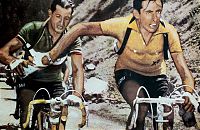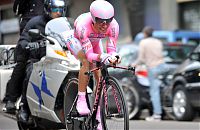Chasing Annie

One Monday in late June 1894, a slight, unprepossessing woman in her early 20s climbed onto a Columbia bicycle in front of the Massachusetts State House in Boston. Annie Cohen Kopchovsky was 5- foot-3, about 100 pounds. Aside from two quick lessons in the previous days she had never ridden a bicycle in her life. All across the country, women who’d never balanced atop two wheels were taking to bicycles, but not merely for recreation or transport. Women used bikes as vehicles of political and social change, too. The women’s suffrage movement and the cycling craze went hand in hand. On two wheels, women found independence and freedom of movement. Because pedaling in billowing Victorian skirts and corsets was impractical, for instance, female cyclists popularized bloomers. To critics, these changes symbolized moral corruption.
Frances Willard, one of the most famous women of the times, was a leading suffragist and president of the Women’s Christian Temperance Union, then the largest women’s political organization. She learned to ride at 53, and mastery of the bicycle as a metaphor for women’s mastery over their lives was the message of her 1895 book, A Wheel Within a Wheel: How I Learned to Ride the Bicycle (reprinted in 1997 by Applewood Books). She wrote that she rode “from a love of acquiring this new implement of power and literally putting it underfoot.” Indeed, fellow suffragist Susan B. Anthony said in 1896 that the bicycle “has done more to emancipate women than anything else in the world.”
From Peter Zheutlin’s article in Bicycling magazine:
Source












